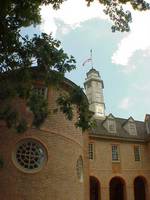Recently my sister and I visited Victoria, British Columbia on a "Girls Weekend Out" trip. We had a marvelous time! We caught the ferry at Port Angeles, Washington then a pedicab driven by a very insistent, very interesting college student to our hotel.
Our three day visit was packed with places to go from morning to night. We enjoyed a wonderful traveling exhibit about Ancient Egypt at the Royal British Columbia Museum. They also had fascinating and beautifully displayed local exhibits as well.
See additional photos of the Royal BC Museum.
We are both doll collectors fascinated by historical costume so we had a great time at the Royal London Wax Museum.
See additional photos of the Royal London Wax Museum!
We ate delicious fish and chips at the Millstone Restaurant. We sampled delicate English hoers d'oevres at high tea at the Empress Hotel.
We browsed the antique shops of Fort Street and marveled at the beautiful stained glass windows of the Victorian mansion, Craigdarroch Castle.
Photos of Craigdarroch Castle
See additional photos of Victoria, British Columbia!









































